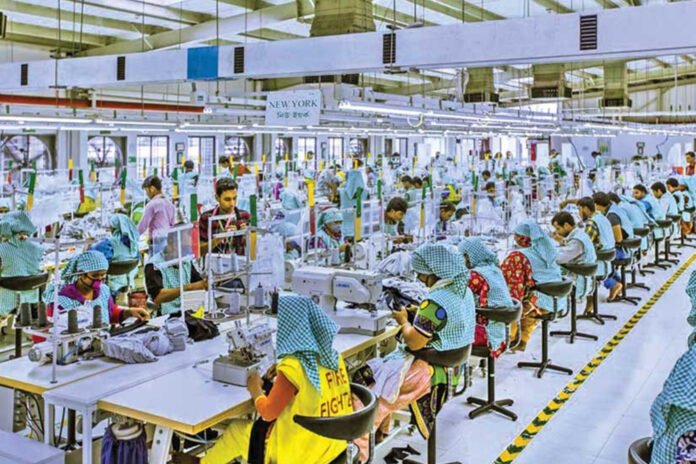Bangladesh’s largest industrial zone at Mirsarai in Chattogram has yet to take off though some factories have started production but the majority of investors intending to establish apparel units have put their investments on hold because it lacks the required facilities.
The 500-acre garment village was started in 2018 and till now only 41 garment factories have taken a lease of 239 acres. The Bangladesh Garments Manufacturers and Exporters Association (BGMEA) was taken on board in establishing this special zone.
But none of them has shown interest in setting up their units there. Some of them have even canceled the lease, citing poor progress in building necessary infrastructures like access roads and ensuring essential utilities for investment.
A similar agreement with the Bangladesh Knitwear Manufacturers and Exporters Association (BKMEA) four years ago but practically no factory has been set.
An official of BGMEA complained that promised facilities have not been provided to the garment sector. The land is still about six feet below road level. There is no gas or electricity. There is also no arrangement for workers to live in and their commuting to and from work.
One of the 41 entrepreneurs in the economic zone said the global situation, including Covid-19 and the war in Ukraine, has created uncertainty. We have to think about the future, but we lack confidence. As a result, many are reconsidering whether to establish factories or invest there, he added
A representative of the BKMEA said out of 800 active members, they have received only 10 applications so far. He said the infrastructure development work there is very slow. The township has not yet been built, and there are questions about whether or not workers will be available.”
In such a situation, industry insiders believe that the decline in clothing exports due to the global economic slowdown following the Russia-Ukraine war and the renewed political and labor unrest could further delay the setting up of garment factories in the economic zone.
Project Director at the Bangladesh Economic Zones Development Project under Beza, countered that five industries of sectors other than apparel have already started production here. Another 22 industries are working. If the zone was not ready, how did they build infrastructure and start production? He said Beza has plans to provide planned accommodation for workers outside the economic zones.
As the prices of construction materials have skyrocketed. Many [garment factory owners] have taken their [leased] money back said an official of BGMEA. The Beza project director feels that the apparel entrepreneurs who took a lease of land might lack enthusiasm. “That’s why they are arguing with different excuses. If they were interested, they would have come to us to discuss any problem.
The Beza executive chief explains they have a master plan for how much soil is to be filled in and have built a road accordingly on the side of the land allotted to apparel owners. “Now some of them (garment industry owners) tell us that we have to raise the soil to the level of the road. That is not doable.
The garment village is expected to see an investment of $2 billion and create five lakh jobs. Initially, apparel owners seemed upbeat at the initiative, hoping to get a world-standard industrial zone equipped with all necessary logistics and a centralized effluent treatment plant.
Entrepreneurs of factories that have started production in Bangabandhu Sheikh Mujib Shilpa Nagar told TBS that a portion of the workforce currently lives in Mirsarai town or nearby areas, which is about 16 kilometers from the zone. These workers are transported by their own arrangements.
The Beza authorities want to establish a central effluent treatment plant (CETP) for all industrial enterprises in Bangabandhu Sheikh Mujib Shilpa Nagar according to global standards, the garment industry does not want to be a part of it. According to an official, garment, and textile industry owners want to establish ETPs in their own way.



